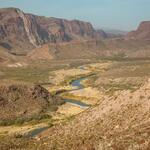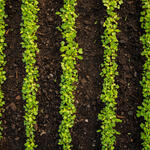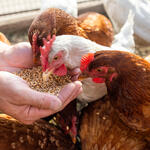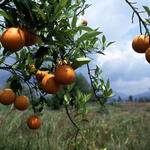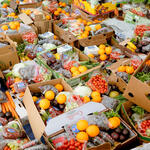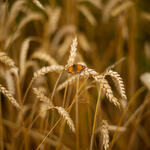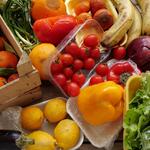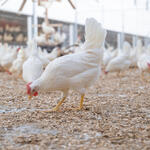- Date: 29 June 2023
- Author: Tara McNerney, Pacific Coast Food Waste Commitment Manager, WWF
The Pacific Coast Food Waste Commitment (PCFWC) recently released a report detailing the initiative’s progress in 2022, demonstrating remarkable strides towards its goal of halving food waste by 2030. Particularly noteworthy is the PCFWC's groundbreaking dataset—developed using measurement and reporting tools provided by ReFED—that allows year-over-year comparison of food waste at the retail level. This dataset constitutes an unprecedented resource in food waste research that will provide much-needed guidance for the retail industry as well as other sectors.
- Date: 21 June 2023
- Author: Brian Richter, senior freshwater fellow at World Wildlife Fund
The iconic Rio Grande, or “Great River,” is at risk of losing its greatness. Water overuse and climate change have heavily depleted the once-mighty flow of the river, creating desperate conditions for the farming communities and natural ecosystems that depend on it. We can restore the Rio Grande to some semblance of its former glory, but doing so will require a transformational shift in the way political leaders, farmers and communities perceive the river, their culture, and their livelihoods.
Just how far has the mighty river fallen? Consider this: whereas the river once rose forcefully in springtime in response to melting snows in Colorado, its ‘spring pulse’ has now dwindled to less than a third of its former volume. As a result, water storage reservoirs essential to farming have dried up, leaving farmers without water to grow food and fiber. At the end of last year’s growing season, New Mexico’s largest reservoir, Elephant Butte Reservoir, was less than 10% full.
- Date: 31 May 2023
- Author: Julia Kurnik, Senior Director of Innovation Startups, WWF Markets Institute
Hallie Shoffner, a sixth generation Arkansas farmer, knows that we need to change where, and how, we grow our food. She points to climate change as the biggest threat facing farmers, and therefore our food system, today.
Between drought, fire, heat, other extreme weather events, and labor struggles, hundreds of farms are closing or will close in California, which currently dominates production of fruits, vegetables, and nuts in this country. And it’s only going to get worse. In the next few decades, rising temperatures will make places like California’s Central Valley too hot to grow many of the fruits and vegetables that are cultivated there today, and increasingly erratic weather will make a volatile industry even more volatile.
- Date: 01 May 2023
- Author: Sam Wildman, Sr. Program Officer – Sustainable Protein Systems, WWF
Over the past year, I’ve been lucky to collaborate with many American Feed Industry Association and Institute for Feed Education and Research staff and members, forging the first-ever partnership between our organizations. The goal was to elevate a vision that feed and animal nutrition can be a critical lever in providing sustainable solutions to food systems.
World Wildlife Fund’s mission is to build a future in which people live in harmony with nature. That includes making sure there is enough food for a growing population, while protecting our planet’s critical natural resources like water, forests, and clean air. The feed industry, with its global influence, has unique potential to help build that sustainable future.
- Date: 26 April 2023
At least 35% of all food in the US is left behind in fields or goes to waste, while millions of Americans face food insecurity. Businesses, government agencies, funders, and many others are already taking huge strides to address this challenge. But a patchwork of initiatives, no matter how impressive or innovative, will never be enough to make the rapid and dramatic reductions in food waste required to sustain ourselves and our planet. We cannot solve this problem without ambitious leadership and action on the federal level and across all 50 states. This is where the Zero Food Waste Coalition comes in.
- Date: 26 April 2023
- Author: Alex Nichols-Vinueza, Program Manager, Food Loss and Waste; Leigh Prezkop, Senior Program Officer, Food Loss and Waste
Organizations are increasingly working to reduce food loss and waste (FLW) across the food supply chain in support of their commitments to address food insecurity and climate change. That work often starts with donating or composting excess food to keep it out of landfills (where food waste emits methane). While this downstream work is incredibly important, the overwhelming majority of the food system’s environmental impacts occur upstream at the farm level, and the larger challenge is how buyers and growers can more closely coordinate to reduce FLW in a way that utilizes more of what we already grow and shrinks the footprint of agriculture.
In nature, nothing is wasted, and by mimicking this approach, we can develop more circular pathways that use surplus food along the supply chain to first feed those in need, and then develop new sales channels for growers to justify harvesting more of their crop, feed animals, and fertilize their crops—all helping to reduce our natural resource use and impact on biodiversity in the process.
- Date: 25 April 2023
- Author: Alex Nichols-Vinueza, Program Manager, Food Loss and Waste; Leigh Prezkop, Senior Program Officer, Food Loss and Waste
Thus far, the regenerative agriculture movement and its impacts on land rehabilitation have held little consensus. Many broadly reduce this farming approach to practices like no-till, crop rotations, and cover cropping with the simple purpose of reducing chemical and fertilizer inputs. Others underscore the movement's role in reorienting our production philosophies to emphasize reciprocal relationships with the environment and our food systems. For World Wildlife Fund, regenerative agriculture is centered on being deforestation and conversion free, rebuilding soil health, protecting water ecosystems, and supporting biodiversity, food producers, and agricultural communities.
As it stands, roughly 15% of all food produced is wasted at the farm stage, according to WWF’s recent Driven to Waste report. For farmers, this has meant the immediate loss of profits and reduced productivity in farmland over time. However, regenerative agriculture has the potential to revitalize ecosystem services and help reduce on-farm food loss and waste. To date, there has been limited research into how the farming methods associated with regenerative agriculture can reduce these adverse effects – and WWF aims to fill this gap.
- Date: 12 April 2023
- Author: Katherine Devine, Director of Business Case Development, WWF
ChatGPT has been all over the news for its ability to create well-written concepts with minimal prompting, leading many to herald a new era of artificial intelligence. But it’s not the only game in town in terms of innovative AI. WWF, in collaboration with the Pacific Coast Food Waste Commitment (PCFWC), Afresh, and Shelf Engine, conducted pilots using AI purchasing systems in two different grocery retail chains to reduce food waste and improve profits. The results were impressive: food waste was reduced by 14.8% per store on average.
- Date: 29 March 2023
- Author: Julia Kurnik, Senior Director of Innovation Startups, WWF Markets Institute
Our food system needs to change. In the US, we produce more food than is needed, yet 53.6 million people, including 17% of children and 24% of Black individuals, don’t have consistent access to healthy food. Millions face hunger while we waste up to 40% of fresh fruits and vegetables. This comes with an environmental impact, too. Food production is the largest human impact on nature, accounting for 70% of biodiversity loss, 70% of freshwater use, and up to 30% of greenhouse gas emissions (FAO, IPCC). Meanwhile, our appetites, especially for things like protein, are growing faster than our population. We need to figure out how to grow more and waste less while reducing our impact on the planet.
- Date: 09 March 2023
- Author: Katherine Devine, WWF and Sandra Vijn, Kipster
WWF has written previously about turning food waste into animal feed, finding that 14.7 million tons in the US could be safely used for animal feed rather than go to landfills. A new WWF paper highlighting Netherlands-based egg company Kipster’s US expansion goes a step further, arguing that we should consider relabeling “food waste” to “surplus food.”

